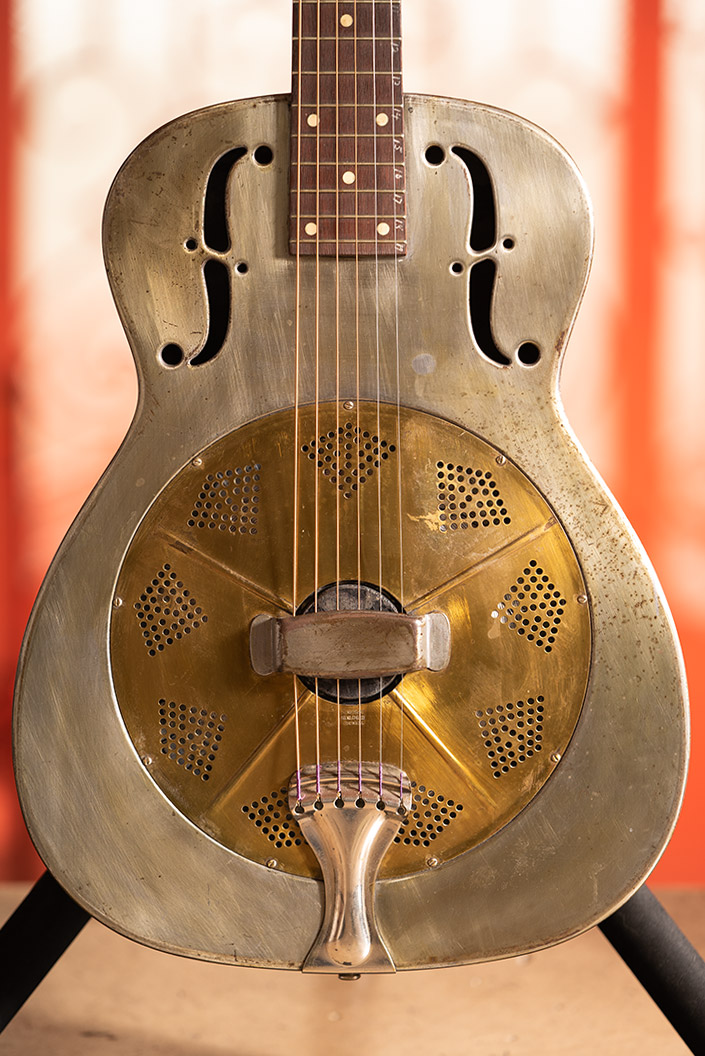

Later in life, she was perceived as the single most distinguished gospel artist of America. Unfortunately, Rosetta doesn’t get the accolades she deserves this is probably due to her devotion to religious material. Her amazing style and unique ability were picked up later by none other than Little Richard, Johnny Cash, Carl Perkins, Chuck Berry, Elvis Presley, and Jerry Lee Lewis. A child prodigy, she would be performing at her local church by 6 years old! Here she developed her style cut from rural and urban elements. She was the first to be recognized as a star from a gospel background and certainly the first to be recognized by the rhythm and blues and rock n roll audiences. A superb mix of spiritual lyrics from gospel music, later being referred to as the ‘original soul sister and the ‘godmother of soul. Sister Rosetta was a prominent force in the 30s and 40s.
#WHAT YEAR WAS MY NATIONAL DUOLIAN GUITAR BUILT ARCHIVE#
“reitzlp1317_001” by Jazz Archive at Duke University is licensed under CC BY-NC-SA 2.0 He was also known to favor a Kay K-24 Jumbo, Gibson J-45s & J-50, also a Washburn. Hopkins guitar on the cover of ‘ The Texas Bluesman’ looks to be a Guild Starfire IV. To this day components of his style are clearly found in Jimi Hendrix, Eric Clapton, Jimmy Page, and SRV. His ability to freewheel and play completely improvisational would confuse and inspire session musicians around him His vocal was a ‘talkin blues’ style, like the great John Lee Hooker. Hopkins would eventually end up playing with Jefferson at church gatherings.Īfter a long career, mostly unaccompanied Lightin Hopkins could impressively switch between musical genres and acoustic or electric guitars. Strongly influenced by Blind Lemon Jefferson, Hopkins would learn guitar at a very early age. His superb technique and clever mid-tempo swinging blues in 12/8 were his unique characteristics. Hopkins’s style was to play unaccompanied with his own brand of fingerpicking, but with the help of a thumb pick. Lightnin Hopkins was a country blues singer, songwriter, and guitarist who began recording in 1946. “Lightnin’ Hopkins in Berkley” by Nesster is licensed under CC BY-SA 2.0 Other notable guitars Johson used were the Gibson L1 and possibly a Harmony Stella at some point. It had 14 frets to the body, five dot markers, a single layer of binding inside the soundhole, and a black ebony nut. The 1928 Gibson Kalamazoo KG-14 being one of which he looked to favor. Robert Johnson was famous for using a small number of guitars. I suppose that’s one way to get away from hustle and bustle and learn your chords. Jimmy Page was said to be a huge fan of Johnson.Īpparently Robert Johnson learnt to play guitar in a graveyard at night, perching on tombstones.

Definitely one of the most influential musicians of his time. He is very much one of the masters of the Delta Blues. He created a perfect blend of innovative Country Blues. Mixed it up, absorbing all the influences that came before him. Johnson took that raw, rhythmic resemblance of the famous Delta Blues guitar sound. He was the first guitarist in history to incorporate boogie woogie from piano to his finger picking slide techniques. Robert Johnson really hit the good times during the 1936-37 period with his trademark combination of singing, guitar skill and amazing songwriting talents. “robert-johns on” by raymaclean is licensed under CC BY 2.0 Son also favored an early 20s Gibson L-1. He has been known to also play Stella early in the 1930’s recording sessions. There are plenty of photographs around of Son House holding a National 1930s Duolian, Triolian, or the Model ‘O’. Son House died in Detroit, Michigan in 1988. This success lasted until 1974 where he retired again to ill health. He was completely unaware of the 1960s blues revival and huge worldwide admiration for his early recordings.Īfter revitalizing his career Son House continued to tour and do what he was best at. Son was split between playing guitar for the righteous path of religion (as he was a preacher), but then becoming conflicted to play the ‘devil’s music’ The Blues! Son would often entertain the plantation workers with his armoury of songs.Īfter quitting music altogether in the early 40s, Son was found by blues enthusiasts in Rochester New York in 1964. He favored various open tunings like G,D and D minor but also used standard.

With a mix of string popping and trademark bottleneck slide, Son was in a league of his own and inspired generations of guitarists worldwide to recreate his style. Son’s unique style was down to his rhythmic punch, passionate vocals and emotional depth. Son was known for his emotional style of vocals and Delta Slide Guitar Blues.


 0 kommentar(er)
0 kommentar(er)
